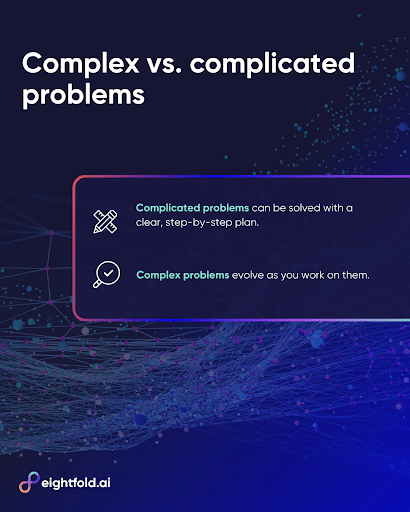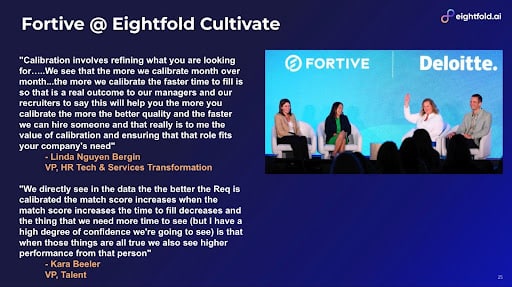- AI isn’t a software swap — it’s a shift from technology that follows commands to a partner that learns, adapts, and thinks alongside you.
- Success with AI depends less on the tech itself and more on our behavior. Adoption, culture, and feedback will shape how we use it.
- Waiting on AI adoption isn’t neutral. It’s falling behind competitors already building smarter, faster, and more adaptive ways of working.
AI is kind of like a slip ’n slide.
It’s fun, fast, a little bit dangerous, and absolutely guaranteed to leave you wet, messy, and laughing nervously as you tumble around. But when you hit it just right? It’s exhilarating, and you can’t wait to go again.
That’s why leading with AI isn’t a routine “tech upgrade.” This isn’t like swapping out your ATS for a shinier one or moving your LMS to the cloud. We’re talking about technology that acts more like a teammate than a tool — learning, adapting, connecting dots you didn’t even know were related, and serving up recommendations in real time.
And just like that slick piece of plastic in the backyard, the trick isn’t fighting the slide — it’s learning how to ride it. Collaborate with AI, treat it like a partner, and you’ll unlock the real thrill: discovering what’s possible when the ride actually takes you further than you could go on your own.

Complex vs. complicated — why AI isn’t a straight line
Here’s the trap: too many organizations treat AI adoption like a complicated project — something you can untangle, map into a linear plan, and check off once complete.
I recently listened to Al Dea’s “The Edge of Work” podcast where he was chatting with Conor Grennan, Chief AI Architect at the NYU Stern School of Business and this statement really struck me: AI isn’t complicated — it’s complex.
- Complicated problems can be solved with a clear, step-by-step plan.
- Complex problems evolve as you work. These have moving parts, unpredictable variables, and interactions you can’t fully map out in advance.
Think of it like the slip ’n slide: you can set it up, add water, and know technically how it works — but once you’re running, sliding, and sometimes spinning off course, you realize it’s not about the setup. It’s about staying flexible, adjusting in the moment, and laughing (or learning) when things don’t go as planned.
That’s AI. When you’re teaching a system to act like a human, you’re building something that learns from its environment, responds to patterns, and changes based on the data it receives. You can’t “finish” that in a Gantt chart.
That means the old approach of “train the trainer, hand over the keys, and walk away” won’t cut it.
This is not a SaaS swap
Too often, leaders think, “We’ve changed software before — this will be fine.” But you’re not moving from one tool to another. You’re moving from a software that does what you tell it to do to a software that thinks alongside you.
That’s not just a technical leap — it’s a behavioral shift at scale.
You’re asking your people to:
- Trust recommendations from a system they don’t fully understand.
- Shift from doing to teaching, coaching, and developing while letting AI handle the mechanics so workers can focus on strategy.
- Embrace a feedback loop, not a one-and-done rollout.
I came across a fascinating study in Proceedings of the ACM on Human-Computer Interaction by Melissa Valentine, Amanda Pratt, Rebecca Hinds, and Michael Bernstein. Their 10-month ethnographic research in a large online retail company found something we don’t talk about enough: algorithms don’t just change how we work — they can reshape how organizations are designed.
The authors put it this way: “As algorithms become part of daily operations, our organizational structures may start to reflect the way those algorithms behave.”
In other words, it’s not just humans adapting to tech—our org charts themselves may start to bend and shift around algorithmic logic. And that’s huge. Because it means the very foundations of how we structure teams, make decisions, and distribute authority could be reorganized by unseen forces under the surface of work. This isn’t just a focus for HR anymore—it’s an organizational challenge to solve.
Related content: See how service with software works to fix high-volume hiring challenges.
Why service with software wins in AI
In a traditional SaaS world, you get the platform, the release notes, and a help center link. It’s a product-first relationship.
In a service-with-AI software model, you don’t just get the platform; you gain expertise, partnership, and hands-on guidance that drive real outcomes by helping you navigate complexity and unlock lasting value.
It’s more like working with an expert travel agent than a search engine. A search engine will give you pages of flight options and hotel listings. An expert travel agent listens to what you really want, factors in the stuff you haven’t thought about, and designs a trip you couldn’t have booked yourself — with fewer headaches along the way.
AI done well works the same way, but only if you treat it like a partner — not a vending machine.
The mindset shift from enemy to partner
Let’s be honest, new technology always brings out resistance. There’s the fear of losing control, and the worry about being replaced. The “but we’ve always done it this way” soundtrack is running in the background.
The problem is if you treat AI like an enemy, you’ll fight it, mistrust it, and ultimately underuse it.
If you treat it like a partner — one that needs training, clear instructions, and ongoing feedback — you’ll get exponentially more value.
In my opinion, it’s not just about mindset. It’s also about trust.
As Nichol Bradford writes for SHRM, many employees hide their AI use out of fear—fear of punishment, fear of losing credit, fear that productivity gains will lead to cuts. This secrecy breeds mistrust and stifles innovation.
Without a culture of trust, people won’t experiment, won’t share, and won’t build the skills we desperately need.
The bigger picture? As Yuval Noah Harari has warned, the real danger isn’t just the technology — it’s the erosion of trust in our systems and each other. History shows that societies fail not only because of politics or economics, but because they couldn’t adapt to new technology with the right cultural shifts.
The real unlock: know vs. do
The real unlock in AI adoption isn’t just knowing what it could do, it’s shifting behaviors so the AI is actually doing the work for you and with you.
Good news – AI isn’t picky. It doesn’t need every record to be pristine or every spreadsheet to be perfectly aligned. Whether your data is structured, unstructured, or somewhere in between, whatever you feed in — résumés, job descriptions, internal notes, lists of competencies, interview feedback, attrition reports, performance reviews, even those “hidden” nuggets living in random systems — AI can figure out how to use it. It learns patterns, makes connections, and turns your messy mix into usable insights.
But (and it’s a big but) remember the old truth: garbage in, garbage out. Just because AI can eat anything doesn’t mean you should throw it scraps forever. The more thoughtful and consistent you are about what you feed it, the sharper and more valuable its outputs become.
That means:
- Partnering with AI like a living system, one that gets smarter with every interaction.
- Using it to make faster, more informed decisions right now, even with imperfect data.
- Creating feedback loops so it improves continuously and adapts as your business changes.
This isn’t set-it-and-forget-it tech. It’s a game-changing collaborator — flexible enough to work with what you’ve got today, but powerful enough to push you toward better habits tomorrow. The more you engage, the bigger the payoff.

Why you can’t afford to wait
Let’s be honest. Sitting on the sidelines won’t keep things the same — it will set you back. AI is already reshaping how organizations operate, make decisions, and respond to change.
Those who wait will have to try and play catch-up against competitors who have already made the mindset shift, changed behaviors, and integrated AI into daily workflows.
It’s not about being “AI-ready” in the tools sense. It’s about being AI-ready in your culture, processes, and expectations. That’s what service with software helps you achieve.
Are you ready to work with AI?
If you’re stepping into the AI era thinking it’s just another software implementation, you’re going to be frustrated.
But if you see it for what it is — a complex, evolving partner that needs both great tech and great guidance — you’re setting yourself up for success.
Remember the slip ’n slide? Folks don’t lay it out and expect a smooth, controlled journey – where’s the fun in that? Once you start running, things get fast, exciting, messy, and sometimes unpredictable. The people who embrace that — who learn to ride the chaos and adapt on the fly — are the ones who actually enjoy the ride.
This is about unlocking capabilities, learning in real time, and building excitement for what’s possible. Yes, it’s a mindshift, but it’s also the future.
So the question isn’t “Are we ready for AI?”
It’s “Are we ready to work with AI?
Rebecca Warren is a Director with our Talent-centered Transformation Team. Before joining Eightfold, she held multiple talent leadership roles with large CPG, agri-biz, restaurant and retail organizations.
